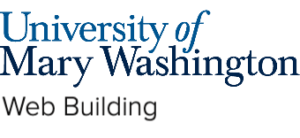Engaging with the Web #
Have you ever learned something from the internet?
It is almost impossible to imagine that someone who has access to the internet not learning something. Being able to share knowledge more freely is one of the greatest strengths that the web provides us.
Have you ever created something and shared it publicly on the internet?
If you have shared something on the internet, you have started building an online identity.
Online Identity #
Online identity is the story others build about you based on what they find on the internet. You can have multiple online identities, such as one on Reddit, one on LinkedIn, one on TikTok, and so on. However, the one we are talking about today is the one tied to your name and potentially your career.
Have you ever googled yourself or someone else?
There are lots of tools and techniques to manage what you DON’T want others to see.
What do you want people to know about you?
Social Media & Online Identity #
When we talk about online identity the first thing that often comes to mind is social media presence.
What is social media?
Social media is any websites or applications that enable users to create and share content or to participate in social networking. These platforms allow people to connect with each other, share information, and engage in discussions and collaborations.
When you thought about your own online identity what did you think about? Did it involve social media platforms or was it something else?
How often have you been told “be careful what you post on social media”?
While it is important to be mindful of how and when you share online, most of the conversation young people experience around online identity is about what they shouldn’t post.
We want to change the conversation from what should you avoid posting, to what do you want to post? What is the story about you that you want to tell? How do you intentionally craft your story?
At UMW we encourage students to think about their online identity and to take ownership over it. One of the ways you can start building an online identity is by using the tools of the open web to start building your own site. Here at UMW we provide you a platform for doing just that.
Domain of One’s Own #
What is Domain of One’s Own? #
Domain of One’s Own provides everyone in the UMW community with a free domain (a web address that you choose, like “www.yourname.com”) and web hosting (a place to store the files and data for your domain).
Once you claim a domain through Domain of One’s Own, it is yours. You can do whatever you want with it, and even take it with you when you leave UMW.
Why Domain of One’s Own? #
At other schools, you might find locked-down e-portfolio systems or other publishing platforms that limit your control, but Domain of One’s Own is just web hosting we are managing for you. The tools of the open web are in your hands.
There are many reasons you may want engage with building on the open web, but one one of them is building your online identity. For example a personal domain can help you stand out in a sea of similar profiles and showcase the work you are proud of during your time at the university.

